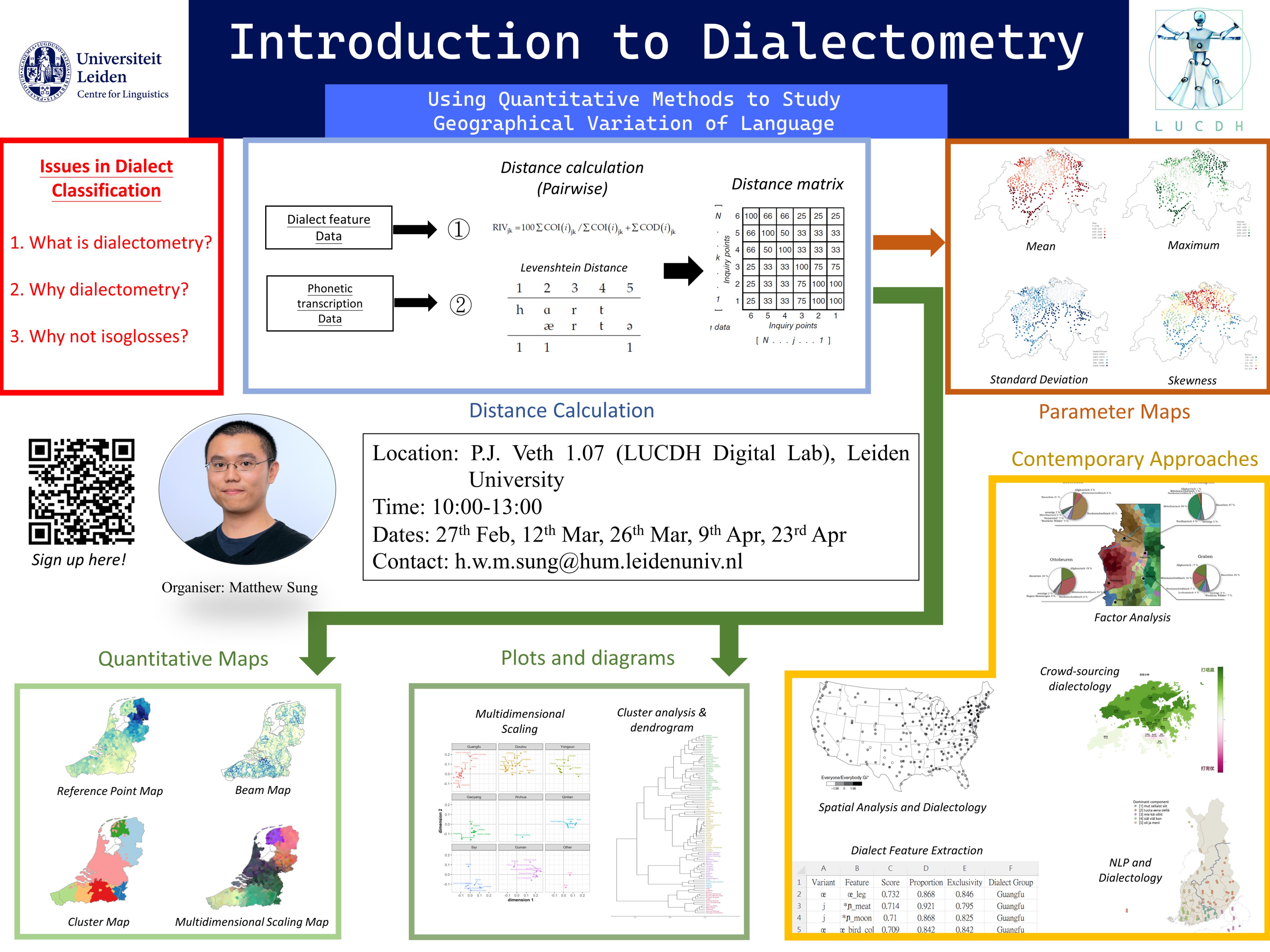Introduction to Dialectometry

Introduction to Dialectometry (2024)
Many proposals of dialect classification use isoglosses to identify dialect areas. However, isogloss maps are often messy, and they are also susceptible to some further problems: 1) features shown on a map can potentially be cherry-picked; 2) very often it is difficult to analyse many features all at once, 3) it is difficult to analyse the relationship between dialects (areas) which are geographically distant and 4) it is difficult to assess how representative features are in an analysis.
In order to overcome these problems and make dialect classifications more objective, dialectologists have employed computational methods in dialectology, often known as dialectometry , the measurement of dialect distances. Dialectometry applies a set of techniques on a large amount of dialect data in order to get an aggregate picture of the variation hidden the dialect landscape.
In this workshop series, the reasoning behind the dialectometric approaches will first be introduced in the first week, then in the following weeks, various techniques in dialectometry will be introduced with hands on exercises. Lastly, the workshop series will end with an overview of the contemporary approaches in the field.
Programming knowledge is not required for this workshop series.
Time & Location
Tuesdays: 27 February; 12 March; 26 March; 9 April; 23 April at PJ Veth 1.07 DH Lab
